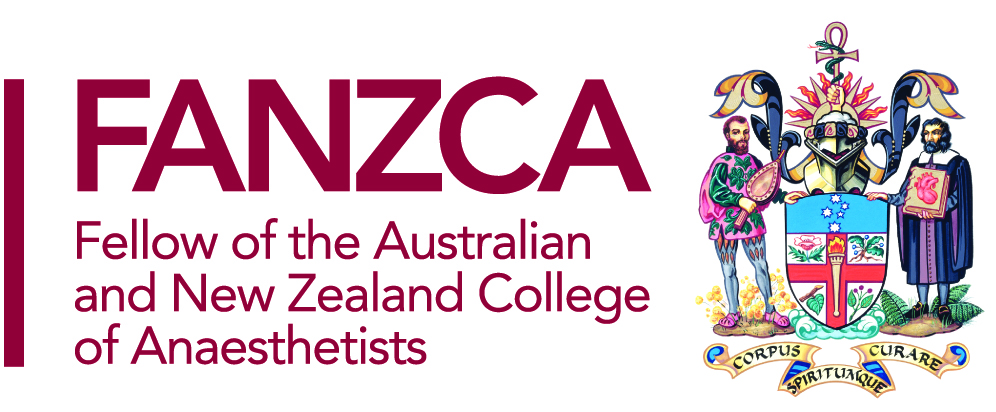The FANZCA logo is only allowed to be used by Fellows of the ANZCA. The motto on the coat of arms reads “Corpus curare spiritumque” which translates as “To care for the body and its breath of life”, which summarises the role of an anaesthetist.
Every aspect of the coat of arms has been deliberately chosen. There are two ‘supporters’ on the coat of arms who were chosen as significant historical figures that made significant contributions to medical science and theory. On the left is Andreas Vesalius who published his most important work De Humani Corporis Fabrica in 1543 from Padua, Italy. This publication revolutionised human anatomy because it was based on actual human cadaveric dissection. In addition he was one of the first people to demonstrate that an animal which had stopped breathing could be resuscitated by artificial respiration with the insertion of a reed into the windpipe. On the right is William Harvey who is depicted holding a book with a heart on the cover. This book represents his publication of De Motu Cordis in 1628, which for the first time described the circulation through the lungs and body.
The shield is broken up into four quadrants, each of which contains a plant that forms the basis for anaesthetic pharmacology. The old world plants are in the upper quadrants. In the upper left quadrant is the opium poppy (Papaver somniferum) signifying analgesia, and in the upper right quadrant is the mandrake plant (Mandragora officinarum) signifying sedation and anaesthesia. The new world plants are depicted in the lower quadrants. In the lower left quadrant is the curare vine (Chondrodendron tomentosum) signifying neuromuscular paralysis, and in the lower right quadrant the cocaine leaf and fruit (Erythroxylum coca) signifying local anaesthesia.
The armorial bearings were designed by a College’s Coat of Arms Subcommittee, which met between September 1991 and September 1992 and consisted of Barry Baker (chair), Peter Livingstone (dean/president), David McConnel (councillor), Peter Jones (RACS) and Joan Sheales (registrar/CEO), and later Michael Hodgson (president). The Duke of Norfolk as Earl Marshall of Her Majesty’s College of Arms authorised the armorial bearings on December 1, 1992, and they were officially granted on May 10, 1994.
For more information on the coat of arms please click here. This information was sourced from the ANZCA.


